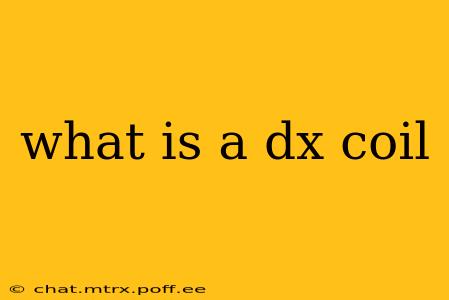For amateur radio enthusiasts, the term "DX coil" evokes images of far-off lands and exciting long-distance communication. But what exactly is a DX coil, and how does it work its magic in enhancing radio reception? This comprehensive guide delves into the intricacies of DX coils, answering your burning questions and illuminating their role in the world of long-distance radio.
What is a DX coil and how does it work?
A DX coil, short for "distance coil," is a type of radio frequency (RF) inductor specifically designed to improve the reception of weak signals from distant transmitters. Unlike a typical radio's built-in antenna, a DX coil offers increased selectivity and sensitivity, allowing you to pick up faint signals that might otherwise be lost in the noise. It achieves this through its unique design and operational characteristics:
-
Increased Selectivity: DX coils often employ multiple windings and taps, allowing for precise tuning to specific frequencies. This sharpens the receiver's ability to isolate a desired signal from surrounding interference.
-
Enhanced Sensitivity: The coil's design and construction optimize the capture of weak RF signals. The increased inductance helps to boost the signal strength before it reaches the receiver's circuitry.
-
Improved Signal-to-Noise Ratio: By effectively filtering out unwanted noise and interference, DX coils significantly improve the signal-to-noise ratio, resulting in clearer and more understandable reception.
Essentially, a DX coil acts as a highly efficient antenna matching network, converting the weak, incoming signals into a stronger signal that your receiver can process effectively.
What are the benefits of using a DX coil?
The primary benefit of using a DX coil is its ability to significantly extend the range of your radio reception. This opens up a world of possibilities for amateur radio operators, allowing them to:
- Communicate with stations further away: Weak signals from distant locations become easily receivable.
- Improve signal clarity: The reduction in noise leads to clearer audio and better communication.
- Access a wider range of frequencies: DX coils can sometimes be tuned to receive signals on frequencies not easily accessible with standard antennas.
- Enhance weak signal reception: The improved sensitivity is crucial for picking up faint signals.
What frequencies do DX coils work on?
DX coils aren't limited to a specific frequency range. Their effectiveness depends heavily on their design and the intended application. Many are designed for use in the shortwave (HF) bands, where long-distance propagation is common. However, some are tailored for specific frequency ranges, such as the medium wave (MF) or even higher frequencies. The coil's specifications will indicate the optimal frequency range for operation.
How do I choose the right DX coil for my needs?
Selecting the appropriate DX coil depends on several factors, including:
- Target frequency range: Choose a coil designed for your desired frequency band (e.g., shortwave, medium wave).
- Antenna type: Some coils are optimized for specific antenna configurations.
- Receiver compatibility: Ensure the coil's impedance matches your receiver's input impedance.
- Size and portability: Consider the coil's physical size and weight if portability is a concern.
Careful consideration of these factors will help you choose a DX coil that meets your specific requirements and enhances your radio listening experience.
Can I build my own DX coil?
Yes, many amateur radio enthusiasts enjoy the challenge of building their own DX coils. Numerous online resources and guides detail the process, outlining the materials, tools, and construction techniques. However, building a high-performing DX coil requires attention to detail and a solid understanding of RF principles.
What is the difference between a DX coil and a loop antenna?
While both DX coils and loop antennas aim to enhance reception, they differ in their design and operation. A DX coil is typically a smaller, more compact unit, often used in conjunction with an existing antenna system. A loop antenna, on the other hand, is a larger, self-contained antenna that creates its own receiving loop. Both can be highly effective, but the best choice depends on the specific application and desired performance characteristics.
This comprehensive guide provides a solid foundation for understanding DX coils and their role in long-distance radio reception. Remember to always consult the manufacturer's specifications and safety guidelines when using a DX coil. Happy listening!
